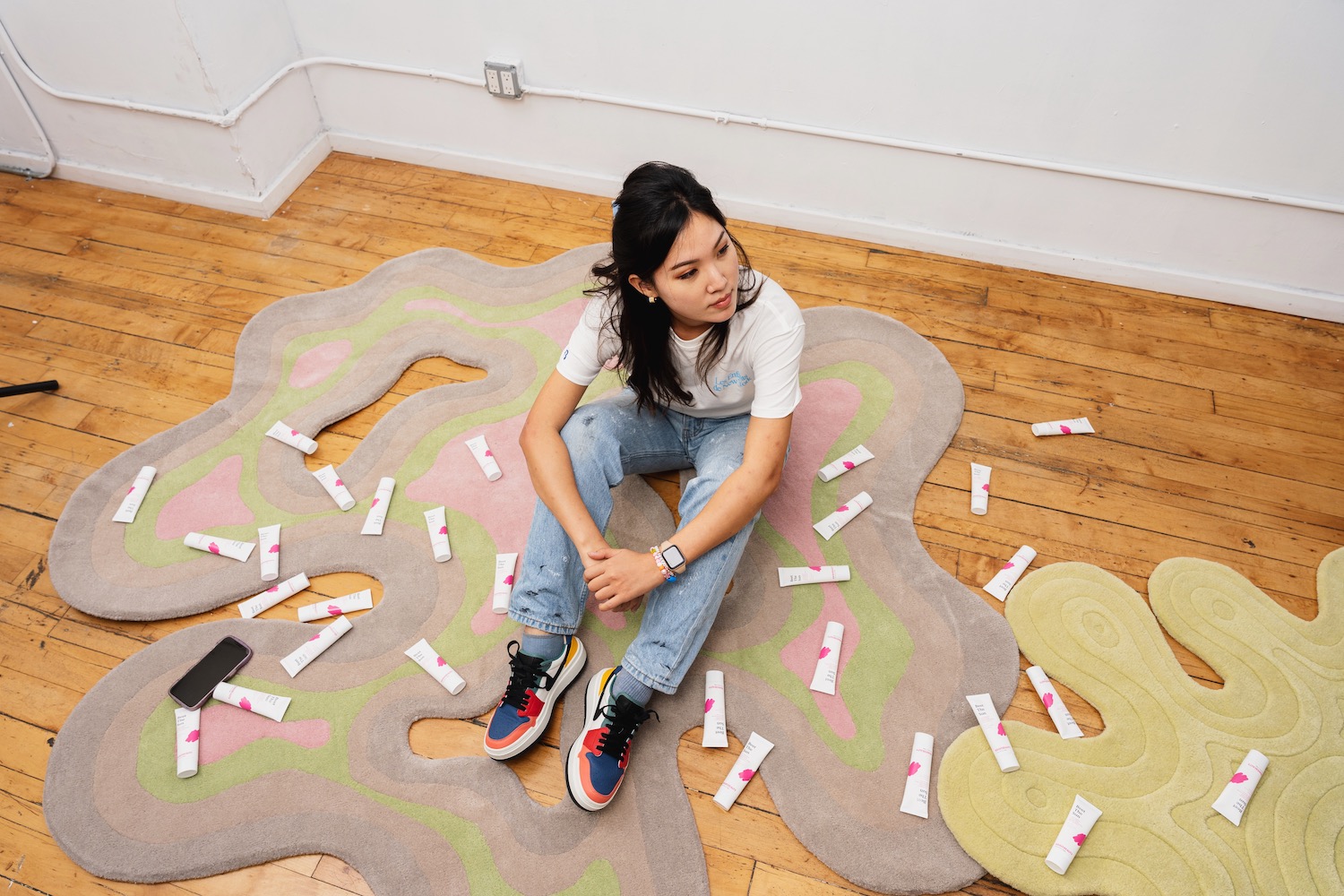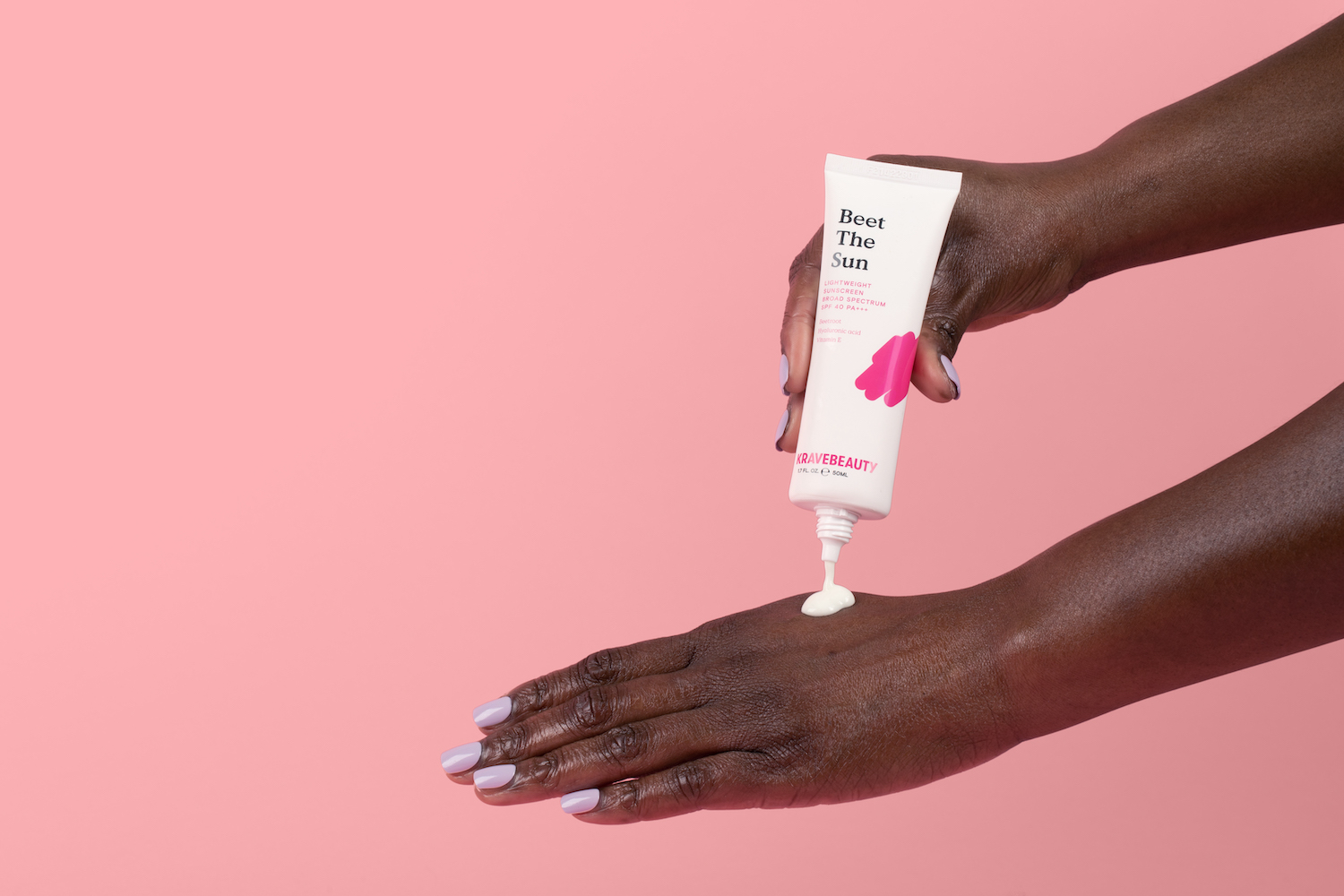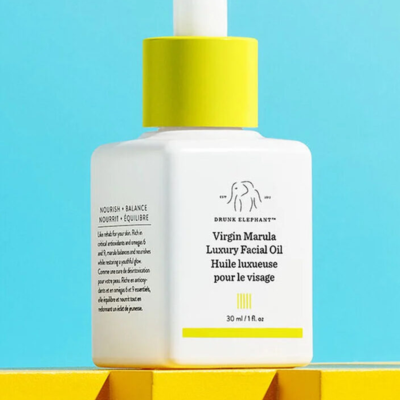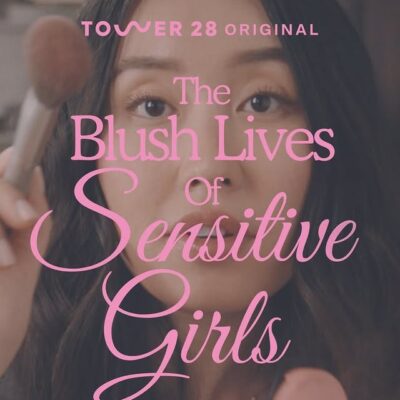
KraveBeauty Founder Liah Yoo Talks Beet The Sun’s Relaunch, Sunscreen’s Testing Problem, And Why She Agrees With AOC
KraveBeauty’s cult-favorite sunscreen Beet The Sun is back
Founder Liah Yoo made the difficult decision in 2021 to take the product off the market when an independent third-party test discovered its SPF was lower than the advertised 55. At the time, other sunscreens, notably Purito’s Centella Green Level Unscented Sun SPF 50+, were also pulled from the market for similar reasons, leading to questions about the dependability and marketing of sunscreens.
Confronting those questions, Yoo was highly conscious of recreating what KraveBeauty’s customers loved about Beet The Sun while doing substantial due diligence during its reformulation process. On its website, the brand lets customers in on the due-diligence process by posting results from an in vivo SPF study conducted on Beet The Sun’s updated formula by Princeton Consumer Research Corp. that finds it achieves a mean SPF value of 44.8.
Yoo says, “We thought that maybe people don’t trust us anymore, and it’s fair for not everyone to trust us with everything that happened in the past, but I think, because we’ve been transparently sharing our product development process and the testing we did in different labs, showing those receipts has allowed people to have some faith and trust in the brand again.”
Prior to its discontinuation, Beet The Sun accounted for over 20% of KraveBeauty’s sales. With the relaunch, Yoo anticipates it will become the brand’s No. 1 product this year. Ahead, she talks about barriers to sunscreen development, offers advice for fellow founders looking to break into the sun protection category and touches on her future plans for KraveBeauty.
What was the biggest challenge in the reformulation process?
The UV filters that are allowed here in the United States are generally a little bit oilier, and the higher the protection that you want to achieve, the thicker and the greasier the formula can be. Even though we wanted to go for SPF 50 for this Beet The Sun product, we wanted to make sure that it’s very similar in terms of the texture, the application and the finish that people really, really enjoyed with the previous one.
With that, I think using very greasy and oily ingredients and making them into a very lightweight gel texture was the biggest challenge that we had. We also had to reject a lot of prototypes because, for some reason, a lot of the U.S. filters can oftentimes pill under makeup. There were prototypes that were great, but, when you apply it, but it wasn’t compatible with makeup.
Congresswoman Alexandria Ocasio-Cortez recently posted about the United States being behind when it comes to UV filters compared to Asian countries like South Korea.
I saw that, and it was very timely. It makes sense because all of the other beauty products are managed by the food department of the FDA, and then the sunscreen and acne products are classified as over-the-counter drugs that are regulated by the drug department, which definitely has a different, more stringent processes. I think, though, from what I know, next year the U.S. FDA is approving a new filter, so hopefully with that and hopefully with politicians or lawmakers like AOC, there will be some changes in the regulations.
It’s about time. The last time a new filter was approved here was in the 1990s. You can see how the rest of the world evolved with the formulation, innovation and UV filters. It definitely puts American sunscreens at a disadvantage because, nowadays, people can shop Korean, Japanese or European sunscreen very easily. They’re ordered from Amazon, ordered from an international retailer, and you get it in the United States. If you look at it from an economy perspective, it only makes sense for the U.S. government to really work on protecting the U.S. sunscreens and making sure that they’re up to par.
Do you think regulation is the only barrier for sunscreen brands?
It’s the biggest thing, for sure. The second point is maybe not a barrier for only U.S. sunscreens, but probably just all sunscreens in general. A lot of the times the SPF testing methodologies, even though all the labs use the same methodology and testing in determining the SPF number, a lot of the labs have different variability factors that leads to different results of SPF numbers.
We experienced that with another manual sunscreen formula that we were developing for almost a year. We sent it to two different labs for testing, and one came back SPF 30 and the other came back SPF 15. With that, it does make everyone question, if you have a drastically different result by 50%, which result is more accurate?
I don’t think a lot of people, even chemists, are trained enough to really dissect the lab results for the variability. Going through that testing of process was a big barrier, time hurdle and also a financial burden. When I talked to a lot of SPF testing experts, they were saying that there are alternative SPF testing methods that are in development internationally because the entire industry knows that the SPF testing methodology right now is not the most accurate. I’m not sure when that would actually be announced as a new ISO standard.
Are there key lessons you learned during the reformulation process?
The biggest thing is around the testing process. Not a lot of brands would voluntarily test with two or three different testing labs to get an average result or make sure that it’s for sure SPF 40 and not SPF 20. Doing the due-diligence process of interviewing different testing labs and making sure that they’re very up to speed with the most updated ISO standards was what we learned.
I know Korean sunscreens have gotten all of this scrutiny, with the Purito scandal and our Beet The Sun controversy, but I don’t think it’s really a country-specific issue. I do believe it’s more of a wider common global issue because of the SPF testing method. Hopefully, there are more brands that are doing more due diligence around testing.
What advice do you have for other brand founders looking to branch into sunscreen?
You need a lot of patience, and it’s a pretty hefty financial investment as well. Out of all the skincare product categories, I think sunscreen is one that deserves a lot more variety, innovation and different formulations because some people like mineral sunscreen over chemical sunscreen, some people love dewy, others don’t. So, having a really niche positioning for the sunscreen product is important and making sure that they take at least a year to prepare for it with a good financial investment.

Are you growing KraveBeauty’s sunscreen selection?
We’re currently working on two more. We wanted to challenge ourselves to create a mineral sunscreen that’s less chalky and more pleasant. That’s one in our pipeline that we’ve been working on for years that we kept failing at, so hopefully this next run will be successful.
Another is a hybrid sunscreen. With the hybrid sunscreen, we also want to experiment if we can use the new filter before anyone else in the United States. So, we’re preparing for the 2024 U.S. FDA approval for the new filter. Once that news is official, hopefully we have some options that we can present.
What’s been the social media strategy for the Beet The Sun relaunch?
We started teasing two weeks prior. We wanted to make sure that we gave every single bit information possible that people might be wondering to make a purchase so that they don’t need to study everything on the day of the launch. We made it pretty clear who this is for, who this is not for, what type of ingredients we use, what type of filters we use and the testing results. We displayed that all on our socials.
For influencers, we wanted to make sure that we partner with more POCs, especially given that we launched in Black History Month. We partnered with a lot of Black creators to show that the product does work for all skin tones. It doesn’t leave any ashiness or any white cast. That was a very important content strategy for us.
You’re a fan of the deinfluencing trend. Why?
In the last couple of years with the rise of TikTok, it has definitely propelled overconsumption, and it did make me want a lot of different products that may not necessarily be needed from for my skin. People were very fatigued by influencers always endorsing products and showcasing different products on TikTok one after another. People were very tired of this constant commercialized platform.
I don’t think the deinfluencing trend should be a trend, to be honest. It’s all about having more influencers who are more transparent and share what products didn’t work for them and what products are not worth buying. If that was something that had been done over the years, I don’t think the deinfluencing thing would even need to be a trend, but, because of the past three years, we’ve seen so many new products pop up and so many products go viral.
In order for TikTok content creators to be relevant and get a lot of views, comments and likes, they almost had to play into the machine of endorsing one product after another and making sure that they say this is the best product that changed their skin and having this very dramatic quote to captivate the audience in three seconds. I welcome the current trend right now.
As someone who’s a content creator, how has your relationship with social media changed over the past three years?
It’s been interesting for me because I’m a long-form video creator, and it’s been very difficult for me to consume and also create short-form videos, but I know that’s where people are spending the most time. They’re not watching 10-minute, 20-minute YouTube videos anymore. They would rather have all that information in one minute and in a very condensed form.
I personally still feel a little bit torn making short-form video, but I try to challenge myself to make it so that I can stay relevant. It’s definitely a hard balance to deliver information about sustainability and even skincare ingredients and all the nuance within a 30-second or 60-second video. I still feel the most comfortable making 10 minute long videos. That’s where a lot of my creativity flows.
Hopefully, it’ll change. Maybe people are craving longer form videos again, and they’re sick of watching 30-second video, and they just want to sit down and get ready with a 10-minute YouTube video.
“We would rather sell one product to 10 people instead of selling 10 products to one person.”
You want KraveBeauty to become a household name like Vaseline. Can you elaborate on that?
Vaseline is a very boring product, to be honest, but it’s something that we grew up with, and it’s a staple and an essential product for every household almost. I think one out of three Americans have Vaseline in their household.
One thing that I’ve disliked about the beauty industry in the past few years is that there has been so many trend-driven products. If you do follow the trend, you can make a good buck during the time, but it’s not going to be a long-lasting product.
We would rather sell one product to 10 people instead of selling 10 products to one person. That’s what I meant by becoming a brand like Vaseline. They’ve been around for 150 years. I don’t know if we can be that long-lasting of a brand, but hopefully we can aim to be a brand that will last. That’s the philosophy that I have.
Are there other goals you have for KraveBeauty?
Short term, we are definitely interested in tackling acne in a more unconventional way. I know that acne has always been a popular common skin issue, and there are only like two ingredients that are targeting acne in the United States, which are BHA [beta hydroxy acid] and benzoyl peroxide.
We want to create something that’s more gentle and that works with the physiology of acne-prone skin so someone can use it long term. Because I had acne, I firsthand understand how a lot of these harsh treatments can really rip the skin and sensitize the skin. We’re working on something that’s suitable for balancing out acne-prone skin to a healthy state.
We are also looking into ingestible supplements. That’s something that I’m very excited about because I have greatly benefited from taking supplements to clear my skin and also balance out my skin barrier. Our long-term goal would be to just keep doing what we’re doing, not getting tempted to sell out and keeping our ethos as long as possible.





Leave a Reply
You must be logged in to post a comment.